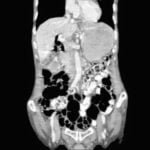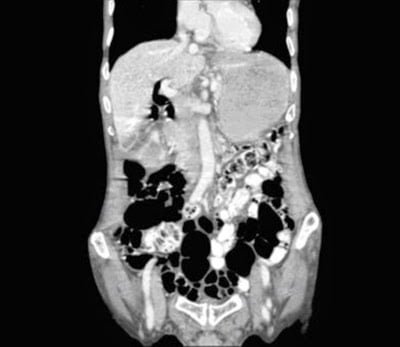
Case of the Month : Recurrent abdominal pain in a young male !
Clinical scenario:
A 27-year-old Egyptian male with no significant comorbidities presented with history of episodic, recurrent abdominal pain of 4 years duration .Patient described pain as colicky, remaining for 1–2 hours necessitating intravenous analgesics predominantly in the upper abdomen. His abdominal pain had no reference or radiation and there was no jaundice associated with it. Patient had been admitted four times in various hospitals during this period and every time basic laboratory evaluation including liver function tests and serum amylase were within normal limits. His ultrasound examination had been within normal limits on each occasion he was hospitalized for his abdominal pain. Patient denied any high risk behavior or drug abuse. Over this period he had stable appetite and constant weight. On examination he was conscious oriented and he had stable vitals. There was no icterus, or lymphadenopathy. His systemic examination was unremarkable.
Evaluation and course :
Laboratory data revealed normal hemogram, normal liver function tests and his abdominal ultrasound was also within normal limits. There were no eggs or ova in his stool examination. Keeping in view recurrent biliary colics magnetic resonance cholangiopancreatography (MRCP) was done which showed a doubtful filling defect in the common bile duct but intra-hepatic biliary radicals were not dilated. There were no gall stones and the rest of the viscera were within normal limits.
Endoscopic retrograde cholangiopancreatography (ERCP) was undertaken which revealed normal papilla. Selective common bile duct (CBD) canulation was done and cholangiogram revealed a filling defect in the lower end of common bile duct. There was mild dilatation of the common bile duct (Figure 1 (Fig. 1)) however, biliary radicals were not dilated.
 |
| Fig 1 ERCP showing filling defect in lower end of CBD |
Sphincterotmy was done and CBD was sweeped with biliary balloon and a live Fasciola hepatica was seen coming out of the common bile duct (Figure 2 (Fig. 2), Figure 3 (Fig. 3)).
 |
| Fig 2 Live Fasciola hepatica removed |
 |
| Fig 3 Complete removal of Fasciola hepatica |
Later using biopsy forceps the worm was taken out of duodenum and confirmation of the species, Fasciola hepatica, was made by the microbiology department of the hospital. Patient was given two tablets of triclabendazole 250 mg (manufactured by Novartis) after the procedure. Following therapeutic ERCP patient became symptom free and is attending our clinic for last 24 months now.
Teaching message :
Fascioliasis is one of the unusual causes of recurrent biliary colics and it warrants a high degree of clinical suspicion especially in non-endemic areas. The current report emphasizes that ERCP may be considered for management of recurrent biliary colics even though classical features of biliary obstruction may not be present.
For further Reading click the Link: Fascioliasis
Click here to join the mailing list of HealthGuide
Join the mailing list!
Get the latest articles delivered right to your inbox!







